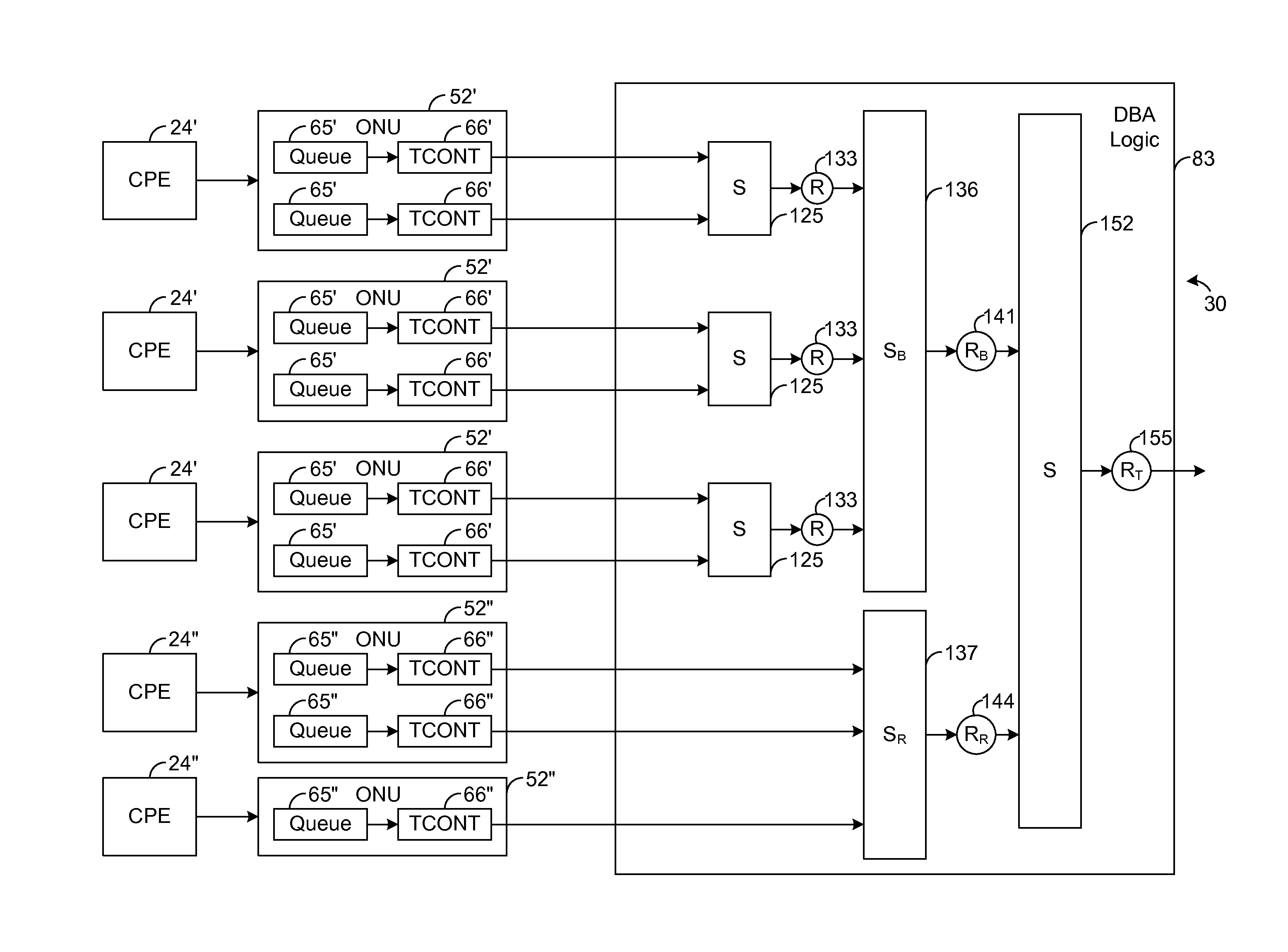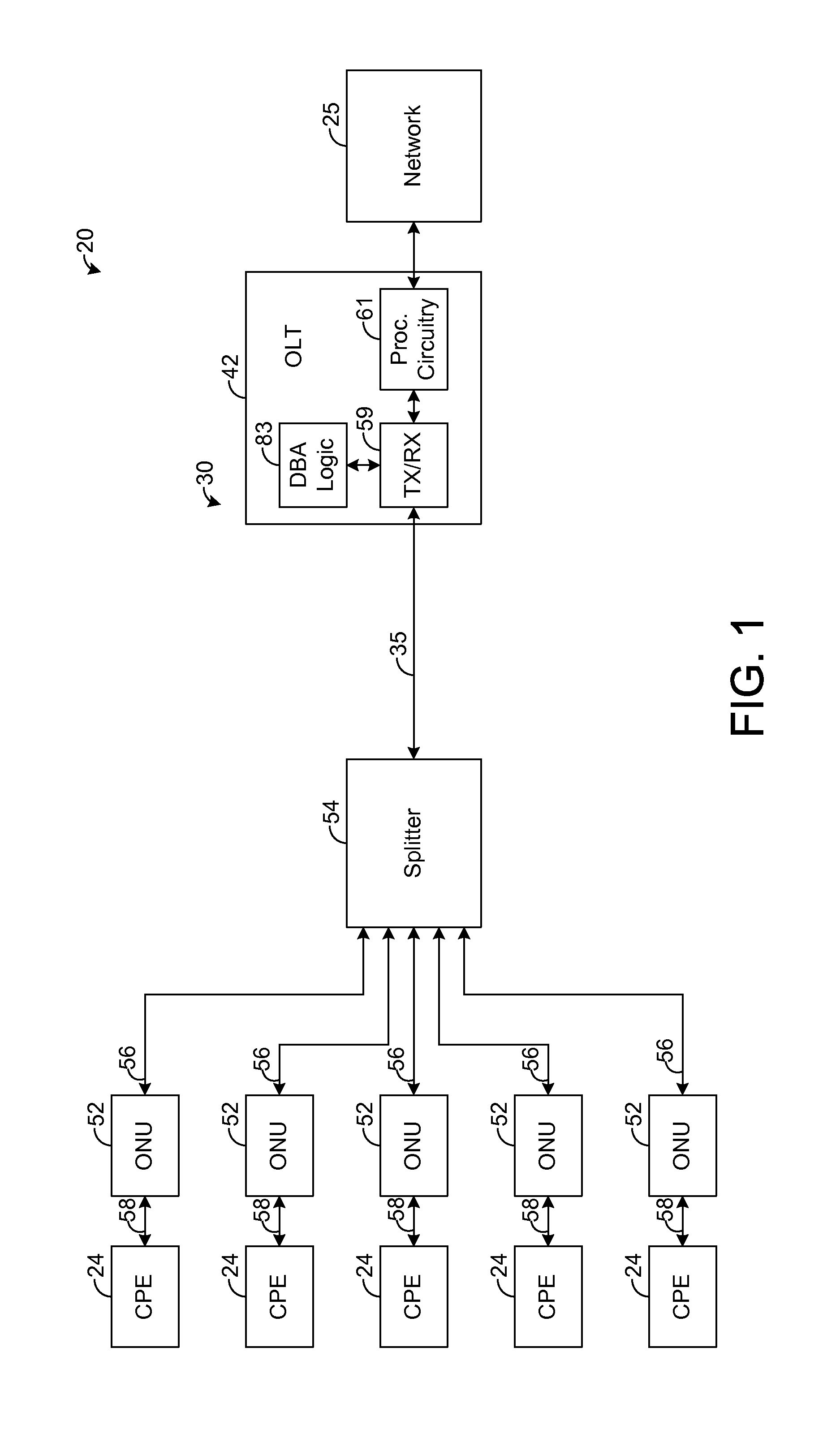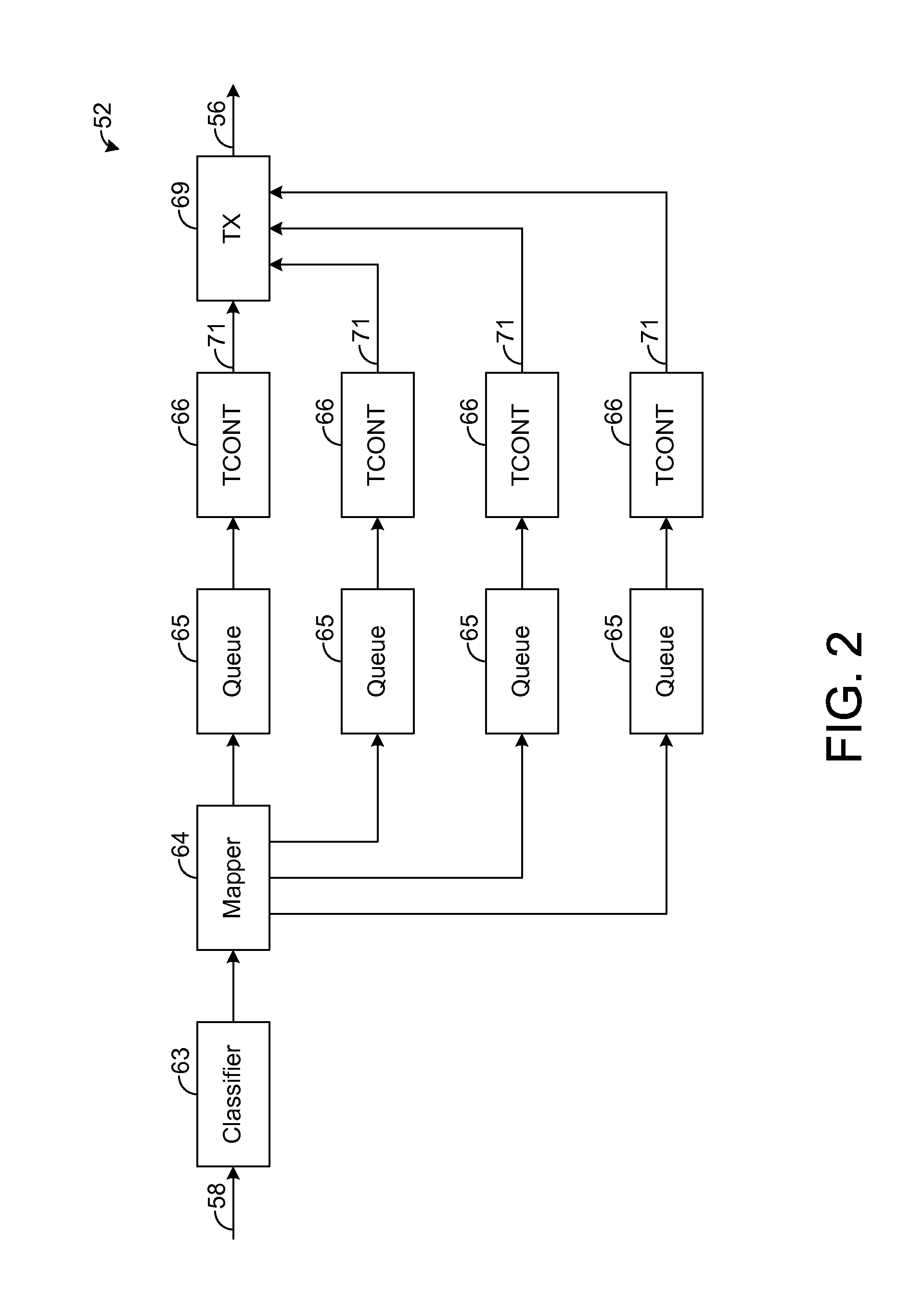Systems and methods for scheduling business and residential services in optical networks
a technology of optical networks and business services, applied in the field of systems and methods for scheduling business and residential services in optical networks, can solve problems such as significant backlogs affecting whether specified performance parameters are met or no
- Summary
- Abstract
- Description
- Claims
- Application Information
AI Technical Summary
Benefits of technology
Problems solved by technology
Method used
Image
Examples
Embodiment Construction
[0012]The present disclosure generally pertains to systems and methods for scheduling business and residential services in optical networks. In one exemplary embodiment, a passive optical network (PON) has an optical line termination (OLT) that terminates an optical fiber servicing a plurality of optical network units (ONUs). Each ONU has one or more traffic containers (TCONTs) addressable by the OLT. The PON dynamic bandwidth allocation (DBA) implements a scheduling hierarchy, including several scheduling layers, such that disjoint sets of TCONTs can be grouped together, then disjoint sets of groups can be grouped, and so on. In such hierarchy, the residential traffic can be grouped separately from the business traffic. Further, within either the residential or business group, traffic may be grouped to define scheduling layers (“sub-groups”) within the residential or business group. Scheduling in one group or sub-group is performed independently of the scheduling in other groups or...
PUM
 Login to View More
Login to View More Abstract
Description
Claims
Application Information
 Login to View More
Login to View More - R&D
- Intellectual Property
- Life Sciences
- Materials
- Tech Scout
- Unparalleled Data Quality
- Higher Quality Content
- 60% Fewer Hallucinations
Browse by: Latest US Patents, China's latest patents, Technical Efficacy Thesaurus, Application Domain, Technology Topic, Popular Technical Reports.
© 2025 PatSnap. All rights reserved.Legal|Privacy policy|Modern Slavery Act Transparency Statement|Sitemap|About US| Contact US: help@patsnap.com



